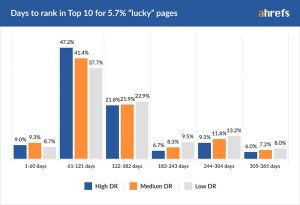Brandon Rochon on why moving culture is more fullfilling than just selling product.
“I’m not a glass half full guy, I’m a glass always full and how do I get it to overflow?”
That comment sums up an encounter with Brandon Rochon, someone who overflows with energy, optimism, humor and insights. Rochon is CEO and Chief Creative Officer at Kastner, one of the few Black leaders in the international agency space. We were talking about how the generational embrace of a multicultural society aligns with multicultural curation in marketing and advertising.
Where inspiration comes from
“In advertising, throughout my career,” said Rochon, “creativity was looked at as, like, from this one place. We never looked at it where it came from — as if it came from thin air.” In fact, whether creative professionals realize it or not, they get inspiration from culture. “The people that inspired me were not in advertising; I’ve never been inspired by advertising, I was always inspired by culture. I started realizing that the best designers and the best artists — whether that was film-makers or musicians or graphic designers or fine artists — they were super-cool curators. They would curate from the craziest and coolest places.”
For Rochon himself, that meant deriving inspiration from a variety of cultures, not just Black American. “I was realizing that I was no longer defined by just Blackness. I was a ‘third culture kid,’ meaning I was an American that did not grow up in America. I was being influenced by the time I spent in the Middle East, growing up in Saudi Arabia, and then going to school in the countryside of England. These things had mad influence on me. I love Shakespeare as much as I love Biggie Smalls — and that was a part of my culture. I could love iambic pentameter as much as I love hip hop, and I could put those two together and create this British aristocrat, hip hop, Brooklyn, South Central mix. No-one was doing it and it showed up in the world fresh – but familiar.”

Younger generations are naturally multicultural
Expect to see more multicultural curation, said Rochon, not least because the younger generation — “Can you believe we’re past Gen Z now?”— expects it. “It’s no longer African/American or Hispanic/American or Asian/American – It’s Black and American, it’s Irish and Mexican. We’re not slashes any more, we’re ‘ands.’ That’s where we’re going to find the richness; no longer will we feel that the multicultural is the outsider, is the other.”
Young people are increasingly comfortable with cultural (as well as gender) fluidity. “America is politically divided right now, but this next generation is naturally multicultural. They live in this world of ‘Who do I identify as’?”
Characteristically, Rochon reaches for a positive aspect of gentrification to illustrate his point. “The horrors of gentrification! Gentrification is breaking the barriers of mixing of cultures, and being comfortable being around different cultures. The first white people to come in are no longer afraid to be around people of color; they go to the grocery store, they’re surrounded by Black and Hispanic people and they’re no longer afraid of the stereotype.” It’s a question, he emphasizes, not of appropriating but of appreciating other cultures.
Chasing the bottom line is fulfilling only in the moment
Successful multicultural curation surely requires a multicultural team? “Amen,” says Rochon. But he makes it clear that it’s not a matter of tokenism. “You can’t just have one Black person, or one Hispanic, or one Asian, because they don’t speak for the whole culture. It’s about lived culture. You need to be really in the streets and truly of the culture and know the nuances.” You need, Rochon said, “true culture decoders around you.”
It’s a mind-set too and one often lacking in agencies that reach, he said, for the lowest common denominator. So many are not in the business of moving culture but selling product. “That’s the job,” he acknowledges. “But what they miss is that they’re still selling to people. People belong to tribes and tribes move in a cultural context. You’re trying to use data and you think data’s going to solve the culture for you. Zeroes and ones cannot give you context. They can tell you what is moving culture, but they can’t give you the context.”
“I don’t do advertising for advertising’s sake. I do advertising to move culture.” Rochon reached for an example to explain the possible conflict between those two things. He was serving an older client, a business maybe 100 years old. “Something huge culturally happened in their front yard, in a city no-one thought it was going to happen in. It made national news. Who would have thought that a small town in Wisconsin would have made headline news around Black Lives Matter? As an agency, what do you do? Most agencies would have been like, here’s the bottom line, we’re making money, but if you’re trying to move culture, you have to make a stand. You have to find work that aligns with head, heart and hand, as Booker T. Washington said.”
It’s all very well, he said, working for an agency which is running successful campaigns and winning Lions. “A Lion doesn’t matter. A Lion is cool today, but agencies don’t make things that last forever. Agencies make things that last for the moment. You want to spend your time and your life — because they will take a lot of it — creating things that will at least fullfil you for life.”
The post Multicultural curation is the future in marketing and advertising appeared first on MarTech.
(22)
Report Post







